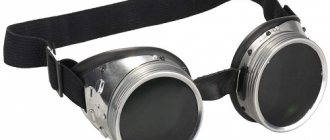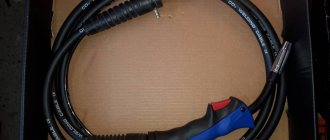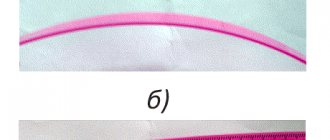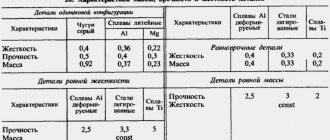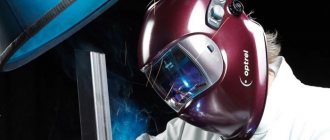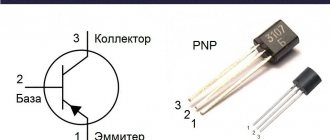Where is a roughness meter used?
The device is used for measuring parameters in laboratories, in the mechanical engineering and instrument-making industries and in field conditions where it is necessary to determine the level of roughness of products. The work schedule, nomenclature and range of values are fixed by GOST 2789-73.
Scope of application: laboratories and workshops of industrial enterprises
Non-contact profilometers
The meters described below are characterized by additional capabilities: remote scanning - optical or laser - of the surface, as well as prompt data transfer to a computer and printer.
A tool for non-contact measurement and recording of results includes:
- A plate with T-shaped slots in which the metal of the product is fixed.
- Laser scanning head.
- Optical sensor.
- Waveguide.
- Control device with interface for connecting recording devices.
The optical measuring sensor has characteristics that make it possible to measure and display on the monitor a fairly large amount of information: longitudinal and transverse profiles of the scanning path, accuracy, discreteness of the measurement step, current and total counting error, etc. The principle of recording a profilogram on thermal printing roll paper turns this device into full-featured profiler. The measurement process and production are controlled interactively. In this way, the roughness can be re-monitored in some areas of the sample being measured.
An example of a compact type non-contact profilometer is the Mahr MarSurf PS1 profilometer. For this method of transmitting a control signal, an optical sensor is provided in the circuit. Possible fluctuations in the distance between the receiver and the measured surface are automatically compensated by the step cutoff system. The device uses both mains power and a built-in battery drive. The Mahr profilometer data sheet contains a detailed description of the method of using this device. The Mahr non-contact profilometer has a roughness measurement range of 5...15 µm.
Profilometer Mahr Marsurf PS1
Working principle of roughness meter
The profilometer is based on a diamond or carbide needle, which directly determines the unevenness of the product. It is moved along the surface of the part; in the event of any vibrations associated with fixed irregularities, the needle moves vertically. The sensor records this movement and converts it into a current pulse, which is processed by the amplifier and displays all the information about the surface of the product. The device produces the following indicators:
- Ra
– arithmetic mean deviation of the relief from the center line;
- Rz
– height of relief unevenness at 10 points.
The equipment is also capable of demonstrating weighted average, amplitude or total characteristics.
Where can I buy
The easiest way is to purchase the necessary device in a specialized store or wholesale organization. Their addresses are easy to find on the Internet. Here you can not only see the product in person, but also test it, get acquainted with the manufacturer’s warranty obligations and get advice from the seller.
If this is not possible, all you have to do is order the product online from an online store. It is better if this is the site of the manufacturer of this equipment. In this case, you can be sure that you will receive the tool that you ordered, complete with a completed warranty card.
If the price seems prohibitive, you can try to find a used device at a virtual sale like Avito.
Types of profilometers
Instrumentation devices differ in the way they provide information:
- Profilometers
– show information on the screen in real time.
- Profilers
– show information after the completion of measurements in the form of graphs, which are later deciphered and analyzed.
According to GOST 19300-86, profilometers and profilographs are divided into:
- Stationary
– for carrying out measurements in laboratories.
- Stationary-portable
– to control the surfaces of finished products in production.
- Portable
– to control the quality of individual elements during production or objects at construction sites.
Devices are also contact or non-contact:
- Contact
– a diamond needle is used as a probe, which moves along a given line on the surface. The needle vibrates if it hits a bump, which generates an electrical signal indicating the size of the bump.
- Contactless
– This type includes optical and laser profilometers. The first ones work due to shadow projection, light section and interference, the second ones use the method of shifting the radiation frequency.
TIME 3221 – modification of the TIME3220 device, equipped with a remote sensor
Rating of quality profilometers
Optical 3D profilometers
Profile 3D
Model produced by the American company Filmerics. A low-cost 3D roughness imaging product that uses two optical interference techniques, white light interferometry (WLI) and phase shift interferometry (PSI), to determine the degree of surface roughness. It is used in mechanical engineering, materials science, energy, forensics, microelectronics, optics, etc.
Research is carried out in the range from subnanometer to millimeter with minimal costs and labor costs.
The device is equipped with a stage with drives for movement in the X and Y axes, a wide-angle lens with 10x magnification, and a 5 megapixel camera. Capable of producing accurate scanning results with part thicknesses from 50nm to 10mm (WLI) and from 0 to 3 μm (PSI).
On a note! In the international system of units of measurement, μm stands for micrometer.
The error does not exceed 0.7%. Vertical scanning is performed at a speed of 12 μm/sec. The price is to be confirmed with the seller.
Profilm 3D profilometer
Advantages:
- simple;
- reliable;
- accurate;
- inexpensive.
Flaws:
- results are not transferred to the PC.
4.Optical profilometers of the Surfiew Academy series
GL-tech company from South Korea develops and produces white scanning interferometers. The review presents the Surfiew Academy model, which is capable of instantly and with high accuracy determining surface roughness parameters in the range from 1 nanometer to 10 mm.
On a note! In the international system of units, infinitesimal lengths, incl. The wavelengths of visible light are measured in millionths of a meter or nanometers (nm).
The process is much faster than using the confocal method and occurs without damaging the samples under study. The software allows you to convert a 3D image into a 2D format (3D rendering), perform a mathematical analysis of the nature of irregularities: chips, cracks, etc. Linear and area scanning available. Visualization of the process is displayed on the display screen.
Measuring tools of this type are used to assess the roughness of parts after particularly precise processing. The device is equipped with a 0.5-inch single-color camera and white LED backlight. The object table, measuring 12x12 cm, is moved manually. The price is to be confirmed with the seller.
profilometer Optical profilometers of the Surfiew Academy series
Advantages:
- speed of operations;
- high accuracy of results;
- three-dimensional picture.
Flaws:
- solid dimensions and weight;
- requires highly qualified operator.
3.Optical profilometer Swift PRO Duo
Model produced by the British company Vision Engineering Ltd. It is a powerful and simple system for analyzing the roughness of various surfaces. The multi-purpose device uses modern methods of optical analysis and video technologies, allowing it to be successfully used on the production site and within the walls of laboratories.
The impressive functionality makes it possible to use the device in electronics and automotive manufacturing, medical equipment production and the aerospace field.
Swift PRO Duo controls are distinguished by a clear interface, high measurement accuracy in accordance with international standards, 100x magnification of the real image, ease of settings and use. The cost is to be confirmed with the seller.
profilometer Optical profilometer Swift PRO Duo
Advantages:
- ease of use;
- greater measurement accuracy;
- presence of a video camera;
- multifunctionality.
Flaws:
- not identified.
LEICA DCM8 SR
The confocal 3D profilometer from the German manufacturer Leica Microsystems receives the best reviews. The device implements the capabilities of a confocal microscope and an interferometer. In combination with additional functions, this design quickly and accurately determines and displays on the screen the characteristics of the test sample. The results are documented using an image recording system based on a built-in CCD camera and four LEDs.
The device's confocal capabilities facilitate fast and accurate profile analysis of complex surfaces as long as their inclination does not exceed 70°. The device is equipped with a highly sensitive detector (1.4 million pixel resolution), which allows viewing research results in confocal and bright-field modes with a high degree of contrast and focus.
The device has dimensions (height, width, length) of 573x390x569 mm and a weight of 48 kg, and is operated in the ambient temperature range from +10 to +35°C and relative humidity no more than 80%. Implements a number of functions:
- obtaining a 3D relief image;
- determination of profile characteristics with coordinates, thickness, roughness;
- carrying out spectral analysis and colorimetry.
The cost of the device is confirmed with the seller.
profilometer LEICA DCM8 SR
Advantages:
- mathematical image analysis;
- high-definition interferometric study;
- the ability to obtain color images of the results (RGB palette) from four LEDs;
- simple software.
Flaws:
- high price.
1.S neox – 3D optical profilometer-confocal microscope
A new product in the line of devices from the Spanish company Sensofar, it combines the capabilities of a three-dimensional optical profilometer and a confocal microscope. The product is used in various fields:
- in mechanical engineering and aerospace;
- materials science and energy;
- criminology;
- microelectronics and micromechanics;
- optics and semiconductors;
- consumer electronics;
- display manufacturing and watch industry.
The model implements technologies of confocal microscopy, interferometry, and focus measurement. A revolving mechanism with six lenses is used as the main working body. In addition, the equipment includes: a high-resolution camera combined with a display, four LEDs (red, green, blue and white), supporting moving tables of various sizes, including one with manual movement and four with electric drive. The price is to be confirmed with the seller.
profilometer S neox – 3D optical profilometer-confocal microscope
Advantages:
- multifunctional;
- results are fast and accurate;
- compact sizes.
Flaws:
- not identified.
Optical profilometers at an affordable price
5.Optical profilometer MicroProf 100
A small-sized device made in Taiwan for monitoring surface roughness in a non-contact manner. It is interesting because it can simultaneously determine the relief of both planes of the plate under study, i.e. front and back sides of the part. Moreover, the device is capable of determining several parameters at once: roughness, waviness and flatness, as well as examining the difference in thickness over the entire area of the sample and also on both sides.
The device is a desktop version; at the customer’s request, it can be made in a portable version for working with samples on site. The manufacturer assures that the device is quite affordable, but this information needs to be clarified with the seller.
profilometer Optical profilometer MicroProf 100
Advantages:
- compact dimensions;
- multifunctionality;
- double-sided scanning system;
- affordable price.
Flaws:
- not identified.
4.Optical profilometer TAMS
Japanese device for determining roughness from Konica Minolta. Compact, portable, contactless device. Developed in collaboration with the German concerns Volkswagen and Audi. Capable of determining with high accuracy the roughness of the finishing of passenger car bodies in the range from initial matte to final glossy. Using this device, intermediate stages of coating application and processing are controlled: steel, aluminum, E-Coat coating, main and finishing.
On a note! Electrodeposition coating of metal surfaces is called E-Coat.
The model is light and compact. The lower part is an optical scanner. The top of the product is the control panel. Working with the device does not require highly qualified operator. The operating training process lasts exactly as long as it takes to familiarize yourself with the user manual. The price is affordable, but you will have to check it with the seller.
profilometer Optical profilometer TAMS
Advantages:
- simple and intuitive controls;
- lightness and compactness;
- fast and accurate results;
- affordable price.
Flaws:
- not identified.
BW-series
The device determines the level of cleanliness of product processing using modern non-contact technologies: 3D optical and interferometric. Multifunctional, analyzes thin layers, sample geometry, suitable for observing deformation processes.
Suitable for industrial use and laboratory research. Can be used as an optical microscope. Performs studies of smooth and rough samples without changing the operating mode. It operates in a non-contact manner, does not destroy the surface of the sample, and scans at high speed. Has compact dimensions. The average price is quite affordable. The final size will be confirmed with the seller.
profilometer BW-series
Advantages:
- quick results;
- non-destructive research methods;
- compact dimensions;
- affordable price.
Flaws:
- not identified.
2.Smart Projector 224
Optical profilometer from the Italian company SmartVision. Designed to check surface roughness. Measurements are carried out automatically and at high speed. An excellent tool for incoming, periodic and continuous product quality control. Does not require highly qualified operator.
Package Included:
- multifunctional PC (touch screen with high image quality);
- light receiver with double telecentric lens;
- camera with dimensions 419x450x475 mm.
The weight of the equipment is 150 kg. The price is to be confirmed with the seller.
profilometer Smart Projector 224
Advantages:
- contactless technology;
- high speed;
- accurate results;
- does not require highly qualified operator.
Flaws:
- large weight and dimensions.
How to choose a profilometer
To accurately assess roughness indicators, stationary contact profilometers are used. The roughness of surfaces made of hard materials, for example, high-carbon steel, is best determined with equipment that has a diamond probe. For rapid processing and evaluation of data on site, preference should be given to portable devices.
Contact meters have a number of advantages, the main one being high measurement accuracy. Non-contact profilometers may show incorrect values if the surface is dirty.
Contact devices
The schematic diagram of a contact profilometer with inductive signal conversion includes:
- Diamond tip stylus.
- Converter.
- Mechanism for moving the probe.
- Electrical signal amplifier.
- Analog-to-digital converter.
- Display or dial indicator.
- Feedback sensors that control the movement of the probe.
- Time relay.
- Measuring range switch.
A typical representative of this class of measuring equipment is the model 296 profilometer, which can be used to measure the roughness of flat surfaces. The main technical characteristics of the device are given below:
SJ-210 Surfest.
- Measuring range of roughness, microns – 0.02…10.0;
- Number of working assessment ranges – 3;
- Systematic error, % - 2;
- Step parameter, mm – 0.004…2.5;
- Result tracking speed, mm/s – 1;
- Power supply: AC mains.
Meter type 296 and similar ones (for example, model 130) due to their large dimensions make it possible to determine the roughness of products in workshop laboratories.
A portable type profilometer that works on the same principle is the Russian device model TR-100, which includes a piezoelectric transducer. It allows control of roughness if the part has not only flat, but also convex/concave surfaces. Calibration of readings to ensure the device is ready for operation is carried out by a unit built into the main circuit. TR-100 has an increased range (0.05...50 microns), but with the same performance values it has a slightly lower accuracy - ±12%.
Measuring various line lengths, shapes, offsets and curves
Roughness testers can measure multiple specified lengths. Shorter distances are used to measure finer surfaces, while longer lines are traced for rougher surfaces. It is helpful to ask about the different options available when considering a roughness tester.
Some roughness testers have an interchangeable stylus or stylus for measuring different shapes, offsets and curves. To measure the inside or outside diameter, make sure the roughness tester you're considering can meet your requirements.
If you prefer the empirical or metric method, some roughness testers can display surface finish results in microinches or micrometers, saving you the trouble of converting it manually.



